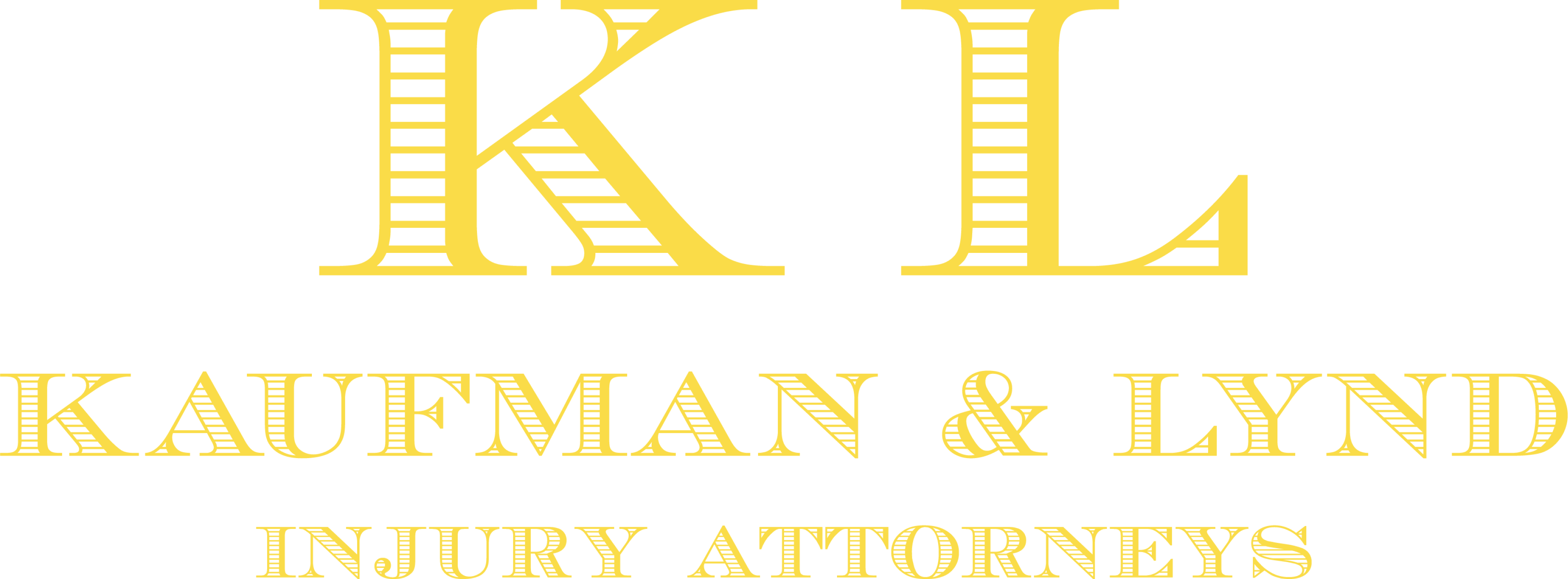What is Comparative Negligence
When a car accident happens, drivers and their passengers will start pointing fingers. When determining who is at-fault for a crash, it can be a challenge. Especially if the evidence is not conclusive.If this occurs, there are laws used to resolve who is at-fault for the car accident. One of which is comparative negligence.
Comparative Fault: What Is It?
The Comparative Negligence law is used to designate who is at-fault for an accident and the amount of recovery for personal injury. A comparison of the defendant's negligent conduct with the plaintiffs will define the amount of damages they can collect.
For Example:
Betty is about to turn left at an intersection. Her light is green, and she is to yield to oncoming traffic. She sees Billy approaching and thinks she has time to turn, so she does. Bill hits Betty’s car as he crosses the intersection. Initially, Betty believes the accident was her fault. But this is not the case because Billy is also partially to blame for driving 30 mph over the speed limit.
In this situation, neither driver is decidedly at fault. Since both drivers were breaking the law, both contributed to the car crash.
Yet, there is still more to Comparative Negligence and the other two types of at-fault laws.
3 Laws Dealing with Car Accident Negligence
The three legal concepts include one contributory negligence rule, and two comparatives:
- Pure contributory negligence
- Pure comparative fault
- Modified comparative fault
It is vital to recognize that not every U.S. state accepts all three types of negligence laws. Some acknowledge one rule and not another. This factor changes the quantity of compensation an injured party can receive.
Thus, it depends on the at-fault law your state recognizes. It will determine whether you can collect a decent amount in damages or end up with nothing.
1. Pure contributory negligence
Only five states recognize pure contributory negligence. It is the strictest of all three.
The purpose of the strict liability doctrine of contributory negligence was to cut down on careless conduct. It is also to reduce fraudulent claims with accident cases.
If the supreme court or jury finds an injured party even the slightest bit at fault, they cannot collect any damages under this state law.
2. Pure comparative fault
Thirteen of the fifty states are pure comparative negligence states.
Under the comparative negligence rule, the injured person can collect damages even if they are mostly at fault. But the amount they receive will decrease by their percentage of fault.
For Example:
If a plaintiff's damages total is $4,000, but their degree of fault was 80% for the car accident, they would only receive $800.00
3. Modified comparative fault
Most states, thirty-three to be exact, follow the modified comparative fault rule. This at-fault law goes into two separate, but similar categories:
- 50 Percent Bar Rule:
The injured party can collect damages if they are less than 50% at fault. If the law finds the plaintiff's negligence less than the defendant's negligence, it changes.
If the defendant is 50% at-fault or higher for the auto accident, they cannot receive any compensation.
Those whose law shows they can collect damages will receive a reduced amount based on their degree of fault.
- 51 Percent Bar Rule:
This is essentially the same as the 50 percent bar rule. However, the injured person can collect compensation if they are 50% or less at fault but not 51% or higher.
The 51 percent bar rule also decreases the amount depending on an injured person's own negligence for the motor vehicle accident.
Conclusion
Comparative negligence is a law of three types that applies to accident insurance in individual states. The dollar amount depends on the percentage of individual contributions to the cause of the accident. Call your local law firm to set up a free consultation to speak with a personal injury lawyer to find out your rights. Find out whether your state recognizes contributory or comparative negligence laws. This information will impact your personal injury case.
If involved in a car accident, contact your insurance company to file a claim. Speak with your personal injury attorney about your state's auto negligence law and about receiving damages.

